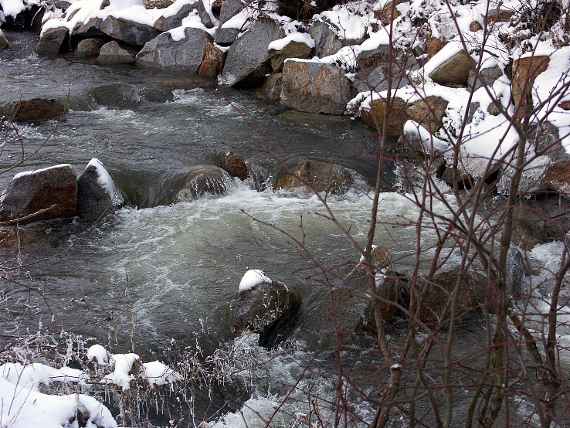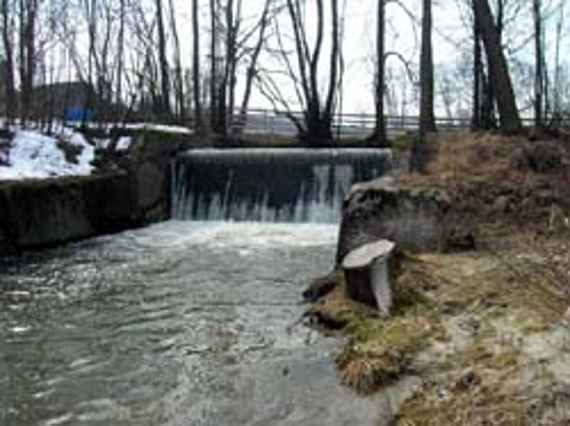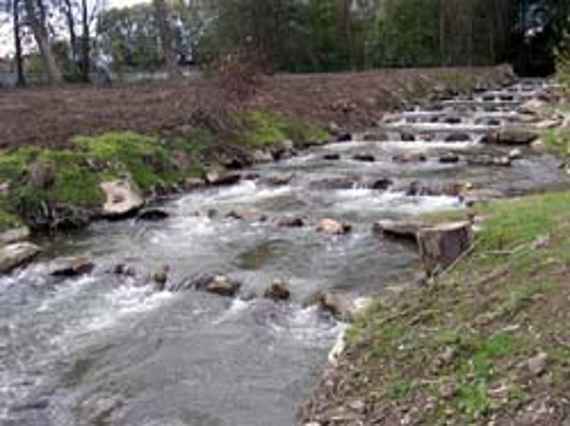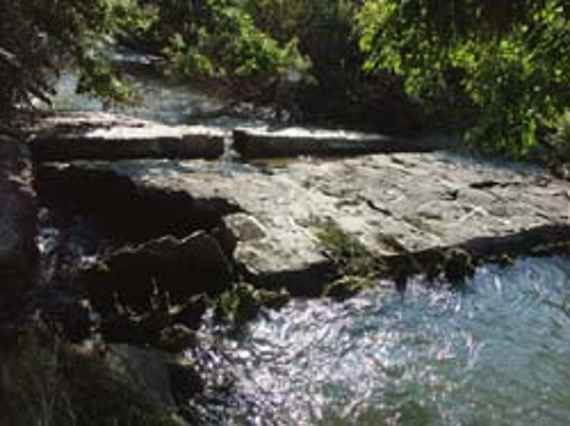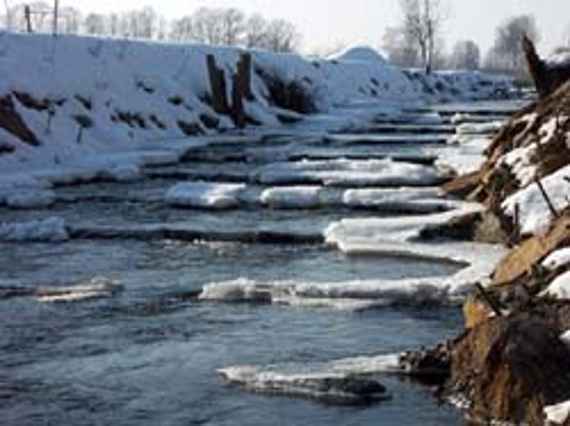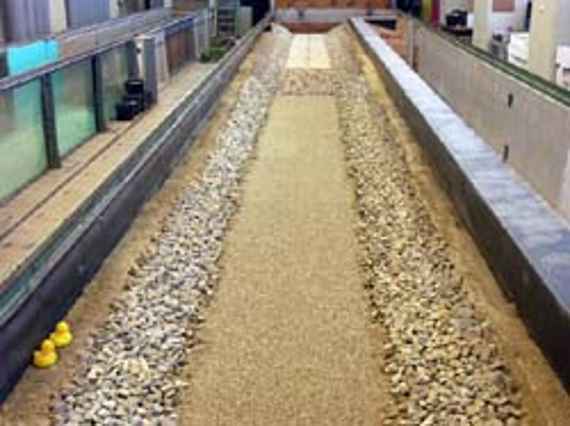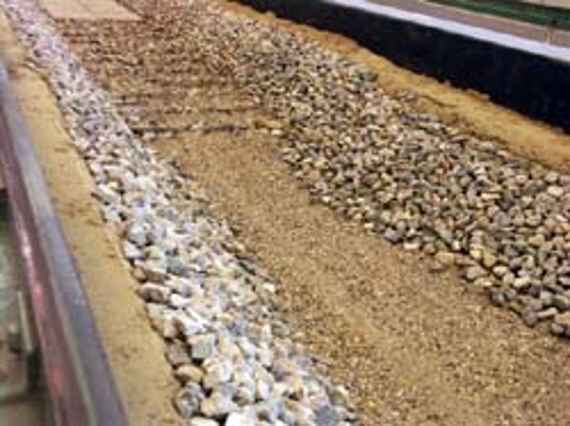In many Austrian rivers there are transverse structures that overcome a difference in height in the watercourse. The most common reason for the erection of such transverse structures was and is the stabilization of the river bed that is not in a morphological equilibrium, which was mostly caused by an increase in gradient due to straightening, increased bed load transport capacity due to narrowing of the river cross-section, bed load deficit, et cetera.
Many of the conventional transverse structures (weirs, thresholds, ramps et cetera) fulfil the function of river bed stabilization, but represent an insurmountable obstacle to fish migration, which must be removed to meet the requirements of the Water Framework Directive. While the hydraulic requirements for fish species in the epirhithral (trout region) are comparatively well researched and documented, there is a lack of sound data for the hyporhithral and epipotamal (grayling and barbel region). In order to take this fact into account, the research project developed dimensioning rules for structured ramps. On the one hand, the structured ramp should guarantee stability and morphologically stable connecting sections to the ramp. On the other hand, it should also be designed in such a way that fish species and young fish with weak swimming ability and bottom orientation can ascend the ramp. The investigations were carried out on the basis of two nature experiments on Innbach (grayling region) and Leitenbach (barbel region), whereby existing riverbed steps were converted in each case. In addition, model experiments were carried out on a scale of 1 to 20.
Old Thanhofer weir at the Innbach
Structured ramp at Innbach (inclination 1 to 20).
Old concrete ramp at Leitenbach (barbel region)
Structured ramp at Leitenbach (inclination 1 to 25 and 1 to 35)
View of the physical model experiment (scale 1 to 20)
Scour in underwater according to HQ100
The nature tests were intended to clarify questions regarding the hydraulic acceptance of the pilot and accompanying fish at the relevant flow rate. In doing so, the mode of action of ramps with different ramp inclinations should be compared in order to better limit the range of optimally suitable ramp inclinations. However, the ramps of the natural experiments differed not only with regard to their ramp inclinations. Also within the respective ramps, basin volumes (V-basin) and drop heights (Δh) varied from one crossbar to the next on each ramp, with the hydraulic conditions for the fish becoming increasingly more stringent towards the top in order to be able to sound out the limits of the hydraulic acceptance of the fish. The model test served to investigate the stability of the ramp structure, the bed stabilizing effect on the upstream and downstream stretch of water (inflow area and subsequent scour section) up to the design discharge as well as the optimization of the size of the crossbar and basin stones and scour protection.
From the investigations, dimensioning information was derived regarding the following points:
- the stability of the structure up to the design discharge
- the stabilization of the river bed of adjacent river sections
- the maintenance respective improvement of the corresponding flood protection
- structural conditions for a sustainable ecological effectiveness

